
Erosion in Ocean Bay in Education resources
Ocean bay is situated to the north of Swanage Bay. Ocean bay suffers from erosion, and since the new flood alleviation scheme outfall was built along the main seafront, the beach at Ocean Bay has vanished at high tides, and large sections of the cliff have fallen away into the sea. The most extensive selection is shown below and is over 100 meters wide
The cliffs at Ocean Bay are composed of clay and sandstone in the southern part and chalk to the north. The photos below show the cliff area at the north end of Swanage bay; the photograph on the left was taken before the flood alleviation scheme outfall was built the photograph on the right shows the landslides and erosion of the beach; this picture was taken in 2000/2001 winter.
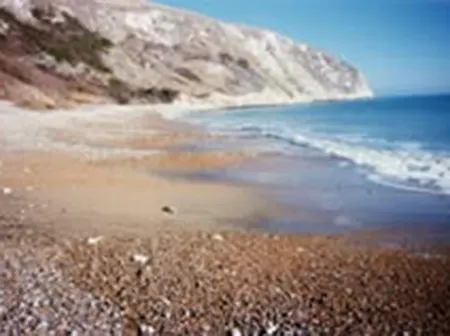
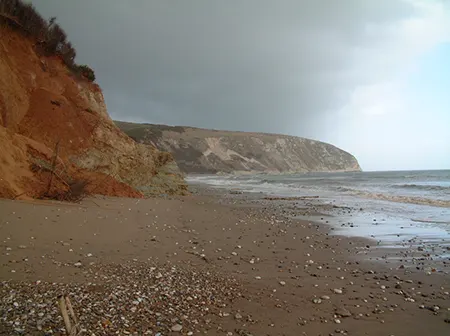
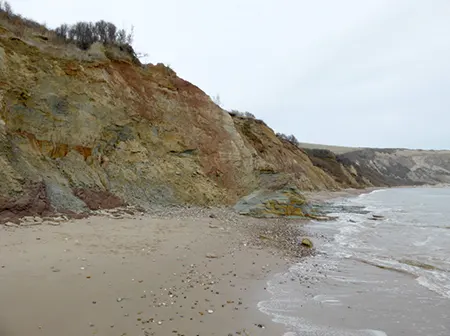
The photo below shows the erosion at steps below Ballard Estate, locally known as Sheps Hollow.
Until the winter of 2000, you could access the beach via the wooden steps down the cliff at this point, but the steps completely fell away due to the excessive cliff falls and erosion on the beach.
The steps were replaced, but there are often landslides in the area, and the cliffs are unstable. In February 2020, the cliff erosion again undermined the steps, and access to the steps was closed by the council due to the steps and path above subsiding.
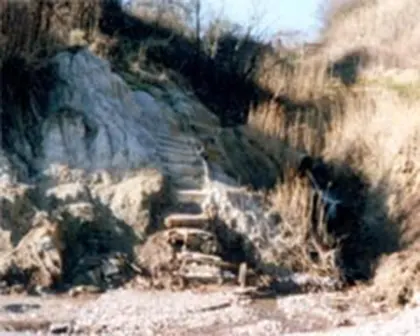
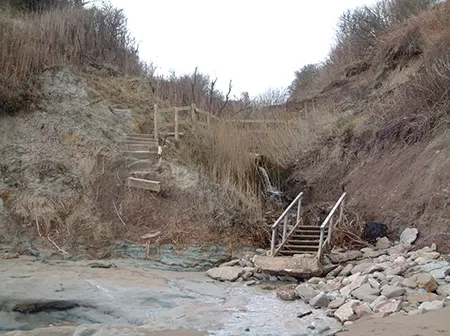
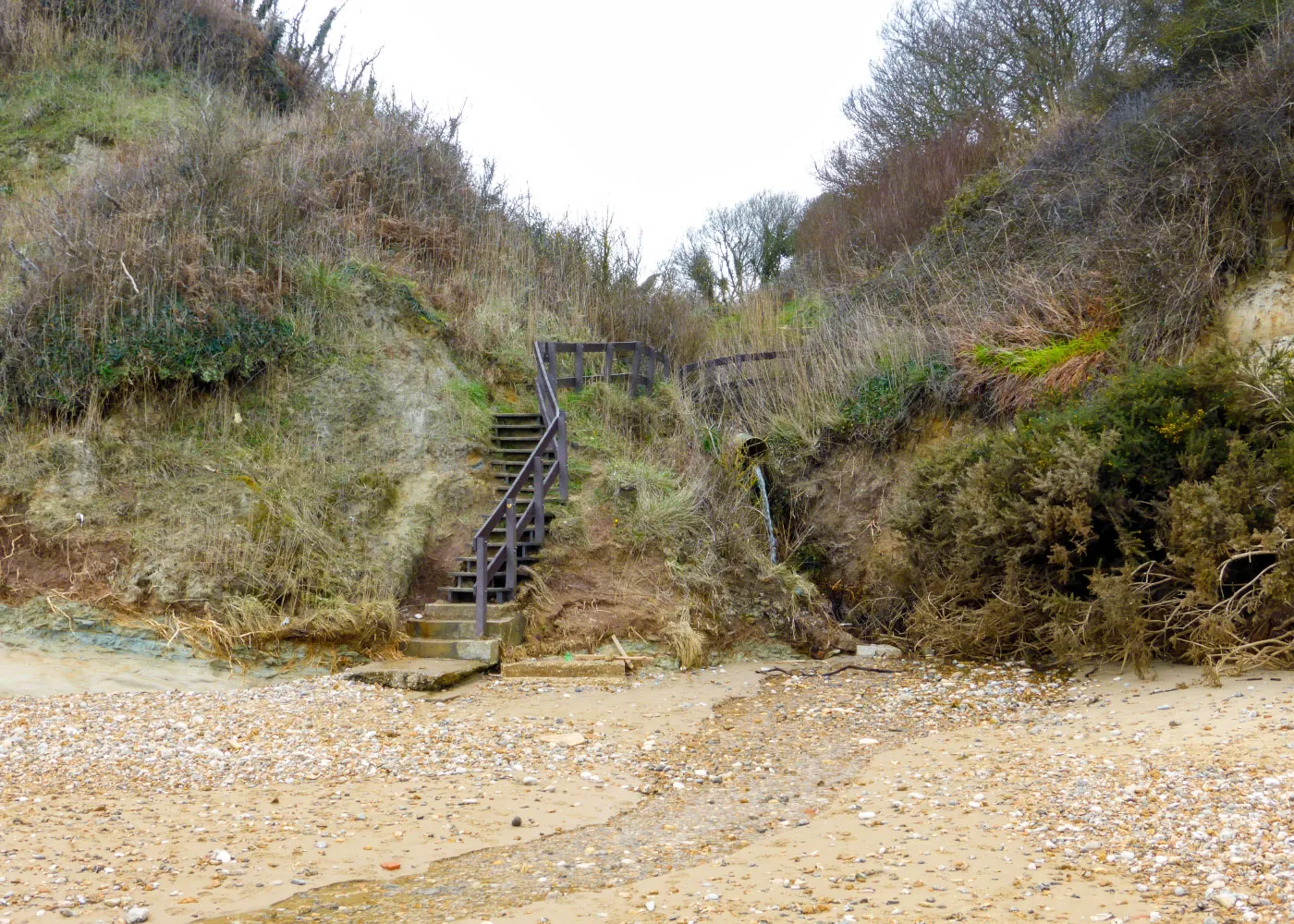
Erosion in Durlston Bay
Erosion of the Swanage and Purbeck Coastline
Durlston Bay is situated south of Swanage, in the most south-eastern corner of the Isle of Purbeck. The bay is smaller than Swanage Bay and has a shingle beach derived from the more resistant strata (mainly limestones) that outcrop the surrounding cliffs.
The name Durlston means "pierced rock", and the bay is believed to be named after the blow hole that was covered up near the end of the 19th century. The bay was heavily quarried throughout the 19th and 20th centuries, with many tunnels dug into the cliff faces. Most of these tunnels have since been covered by landslides which regularly occur in the bay.
To the north of Durlston Bay and separating it from Swanage Bay is Peveril Point. This stone headland is formed of a hard bed of limestone (known as Purbeck Marble), which runs from Herston to the west of Swanage to Peveril Point and then eastwards under the English Channel. National Coastwatch currently uses the small building on Peveril Point as a lookout.
Throughout the second half of the 19th century, Peveril Point was a base for the Dorset Artillery Corps, which was a part of the voluntary force that made up Britain's home defence. The Corps built a fort on the headland, which contained two thirty-two-pound cannons which fired 6.4-inch balls.
In 1886, George Burt built Durlston Castle as a monument for the town. The castle, built on Durlston Head, is currently used as a restaurant and bar. The corbel-turreted building is constructed entirely from local stone. Surrounding the castle are stone tablets inscribed with various statistics and poetry, which reflect the Victorian's interest in the sea and the forces of nature.
The area in and around Durlston Bay is prone to landslides. Many small slides occur yearly, but larger slides may occur after periods of extreme weather. The slides are normally caused by heavy rain, which causes water to run along the clay layers in the strata. This lubricating effect can cause the rocks above to slip down towards the sea. The cliffs in Durlston bay are made up of alternating clays, limestones and shales, which is a key factor in terms of the instability of the area.
One large fall caused 1000s of tons of earth and rock to slide down the cliff into the sea. It happened near a block of flats now only metres away from the unstable cliff edge.
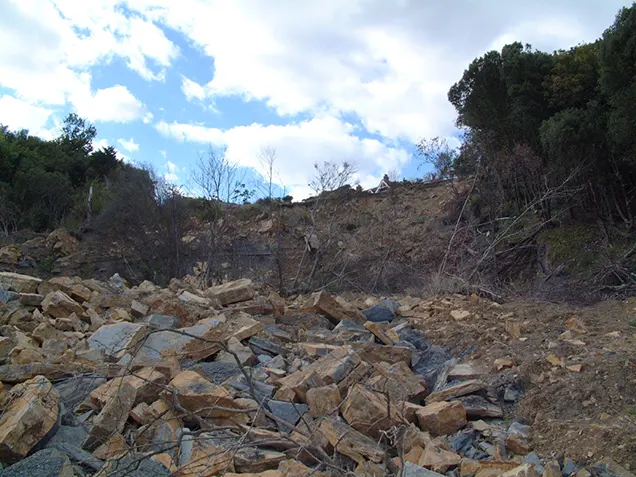
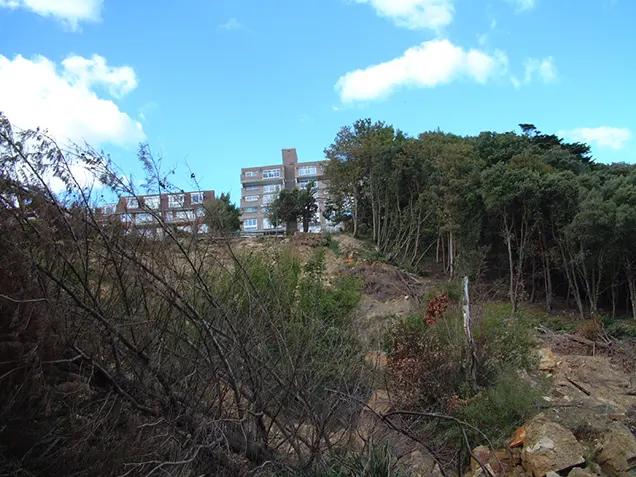
The southern Purbeck Ridge starts in Durlston Bay and runs west
We would like to thank Mr Malcolm Turnbull for the information on this page.